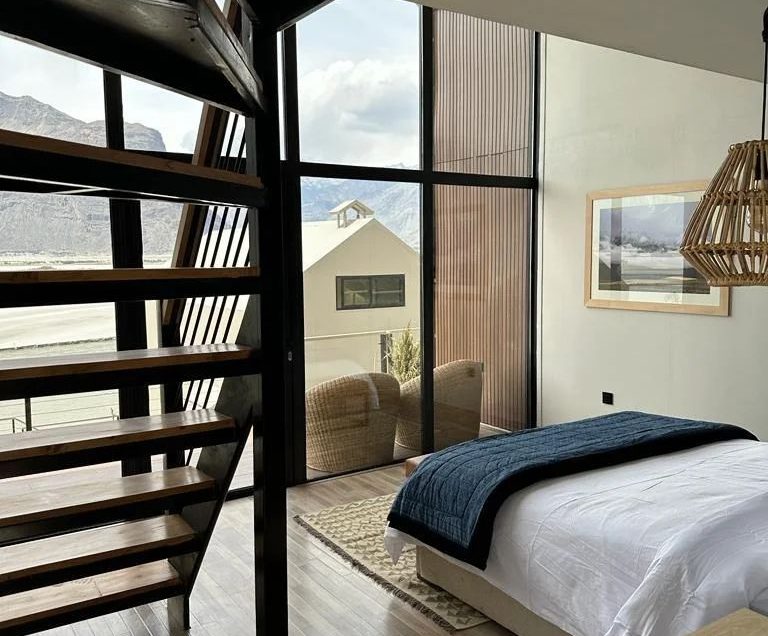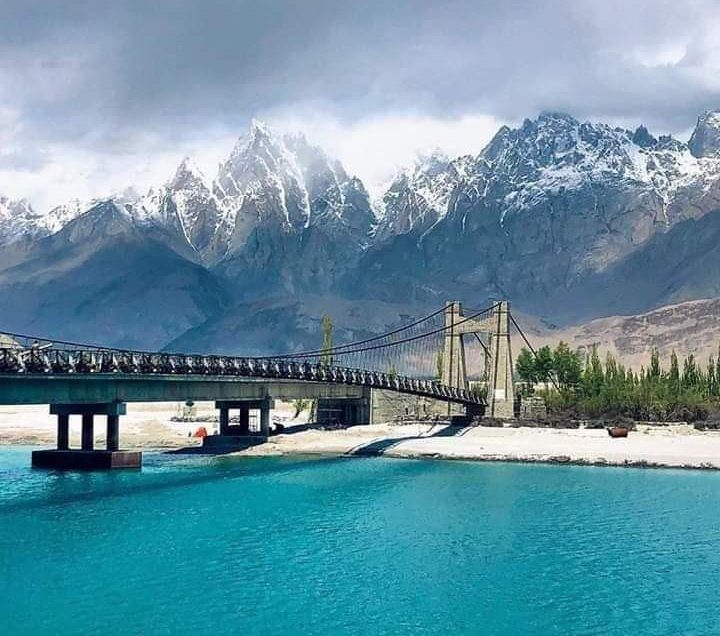Places to Visit in Northern Areas of Pakistan
The Northern Areas of Pakistan, often referred to as the country’s crown jewel. Boast a mesmerizing landscape, rich cultural heritage, and unparalleled natural beauty. This comprehensive guide invites you on a journey through the diverse and enchanting destinations that make up this remarkable region.
Geographical Diversity
The Northern Areas comprise a vast and geographically diverse region, including Gilgit Baltistan and parts of Khyber Pakhtunkhwa. Nestled between the towering peaks of the Himalayas, Karakoram, and Hindu Kush mountain ranges. This area is a haven for nature enthusiasts and adventure seekers.
Cultural Tapestry
Beyond its awe-inspiring landscapes. The Northern Areas are a melting pot of cultures, with influences from Central Asia, the Middle East, and South Asia. The communities here have preserved their unique traditions, adding a cultural richness to the region.
Destinations in the Northern Areas of Pakistan
Gilgit | The Capital Of Gilgit Baltistan
Gilgit City stands as the vibrant gateway to the mesmerizing wonders of Northern Pakistan. This bustling metropolis, the capital of Gilgit-Baltistan, is perched along the banks of the Gilgit River. Surrounded by majestic mountains that paint a breathtaking backdrop. Beyond its strategic location, Gilgit City is a cultural melting pot. Here the diverse heritage of Central Asia, the Middle East, and South Asia converges. The bustling bazaars, adorned with traditional handicrafts and bustling with local life. Offers a glimpse into the region’s rich history and daily rhythms. Serving as a pivotal point for adventurers en route to the scenic valleys of Hunza, Skardu, and beyond.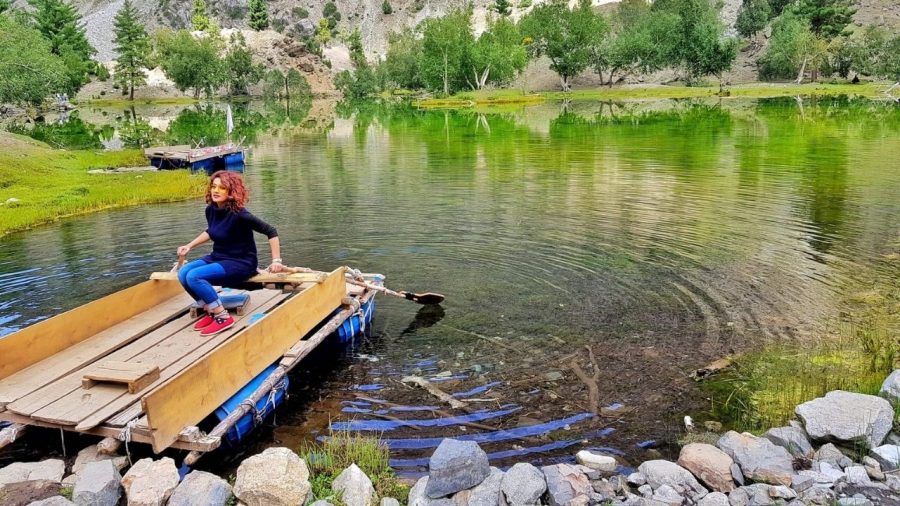
Must Visit Places in Gilgit | Northern Areas of Pakistan
Naltar Valley
Naltar Valley, cradled in the mighty Karakoram Range, is a hidden jewel in the crown of Pakistan. Tucked away from the hustle and bustle. This pristine valley offers a serene retreat amidst towering peaks, lush meadows, and crystalline lakes. Join us on an exploration of Naltar Valley, where nature’s splendor and tranquility converge in a breathtaking tapestry.

Rakaposhi View Point
Located in Nagar Valley, Gilgit Baltistan. The Rakaposhi View Point stands as a testament to the unparalleled beauty of the Karakoram Range in Northern Pakistan. Offering a panoramic spectacle of the legendary Rakaposhi, the world’s 27th highest mountain. This viewpoint is a must-visit destination for nature enthusiasts and mountaineering aficionados.
Located at an altitude that provides an awe-inspiring perspective. Visitors are treated to a breathtaking display of Rakaposhi snow-capped peaks, towering above the surrounding landscapes. The journey to Rakaposhi View Point is an adventure in itself. The winding trails that showcase the rich biodiversity and cultural charm of Nagar Valley. As the crisp mountain air embraces visitors. The view unfolds, creating an unforgettable experience that captures the essence of the Northern Areas’ majestic grandeur.
Hunza Valley | A Paradise on Earth
Hunza Valley emerges as a jewel in the crown of Northern Areas of Pakistan. Inviting travelers into a realm of unparalleled beauty and cultural richness. The journey to Hunza is an odyssey through winding roads. Offers breathtaking glimpses of snow-capped peaks, crystal-clear rivers, and terraced fields. At its heart lies Karimabad, the main town. Surrounded by towering giants like Ultar Sar, Ladyfinger Peak, and the iconic Rakaposhi. Hunza’s charm extends beyond its natural splendors; it’s a cultural treasure trove with centuries-old forts, charming villages, and warm-hearted locals.
The Baltit Fort and Altit Fort stand as testaments to the region’s history. The vibrant Karimabad Bazaar showcases local crafts and traditions. The allure of Hunza intensifies during the apricot blossoms of spring and the golden hues of autumn. Creating a tapestry of colors against the backdrop of rugged peaks. Whether trekking to Rakaposhi Base Camp, exploring ancient forts, or simply savoring the local hospitality. Hunza Valley promises an immersive and unforgettable experience in the lap of Pakistan’s northern wonders.
Places to visit in Hunza | Northern Areas of Pakistan
Attabad Lake
Attabad Lake emerges as a shimmering jewel, a testament to both nature’s beauty and a tale of resilience. Formed in 2010 after a massive landslide dammed the Hunza River. The lake stretches like a turquoise ribbon against the backdrop of rugged mountains. The vibrant hues of Attabad Lake change with the seasons. Reflecting the clear blue skies of summer and the snow-clad peaks in winter. Boating on its tranquil waters provides an immersive experience. Surrounded by the towering remnants of submerged trees, a surreal reminder of the lake’s unconventional origin.
The journey to Attabad is an adventure in itself, with the scenic Karakoram Highway. Leading travelers through tunnels and precarious cliffs. Beyond its visual appeal, Attabad Lake serves as a lifeline for the communities along its shores. Offering fishing opportunities and sustaining local economies. Whether captivated by its scenic beauty or intrigued by the resilience it symbolizes. Attabad Lake stands as a must-visit destination, inviting all who venture to Hunza into a realm of natural splendor and human adaptability.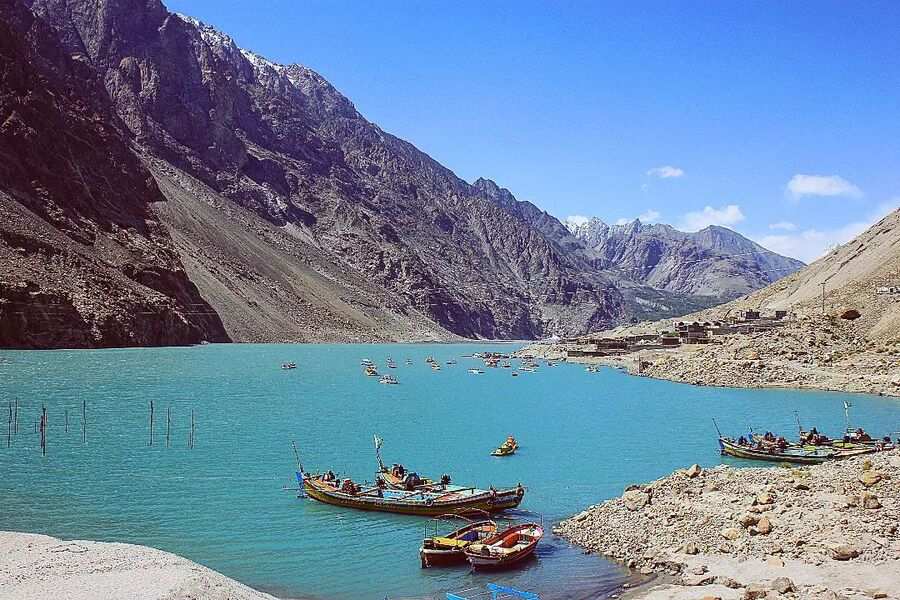
Passu Cones
In the heart of the Hunza Valley, the Passu Cones rise like ancient sentinels. Casting a spell on all who behold them. These geological wonders, also known as Passu Cathedral. Cluster of soaring, pointed peaks that stand in harmony with the surrounding Karakoram Range. The rugged landscape is adorned with these majestic spires. Creating a surreal and captivating scene that photographers and nature enthusiasts find irresistible.
The Passu Cones, composed of sedimentary rocks, attain an elevation that seems to pierce the heavens. Their unique shapes and formations are a result of millennia of geological processes. Making them not only a visual spectacle but also a testament to the Earth’s ancient history.
Positioned along the ancient Silk Road, the Passu Cones hold cultural significance in addition to their natural allure. The nearby Passu Glacier and the Hunza River add to the dramatic scenery. Creating a landscape that is both serene and awe-inspiring.
For those venturing through the Karakoram Highway or trekking in the region. The Passu Cones stand as an iconic landmark, inviting exploration and contemplation. Whether under the glow of sunrise or the hues of sunset. These spires etch themselves into the memories of travelers, leaving an indelible mark of the raw, untamed beauty of Northern Pakistan of Pakistan.
Baltit Fort
Perched majestically in the heart of Karimabad. Hunza Baltit Fort stands as a testament to the region’s rich cultural heritage and architectural prowess. Dating back over 700 years, this ancient fort has witnessed the ebb and flow of history. Becoming a symbol of resilience and continuity.
Originally built in the 8th century, Baltit Fort has undergone several renovations, with the most significant transformation occurring in the 16th century when it was reconstructed in the Tibetan architectural style. The fort served as the residence of the Mirs (local rulers) of Hunza until 1945 when the last Mir moved to the nearby Baltit Village.
The Baltit fort distinctive design features intricately carved woodwork, handcrafted balconies, and ornate windows that showcase a blend of Tibetan and Balti craftsmanship. Its strategic location on a rocky outcrop offers panoramic views of the Hunza Valley, surrounding mountains, and the mighty Karakoram Range.
Declared a UNESCO World Heritage Site, Baltit Fort not only preserves the architectural heritage but also houses a museum showcasing Hunza cultural artifacts, traditional attire, and historical exhibits. Visitors can traverse the well-preserved rooms, experiencing the lifestyle of Hunza rulers.
Baltit Fort’s restoration in the 1990s, led by the Aga Khan Trust for Culture, ensured its preservation for future generations. The careful restoration retained the fort’s original charm while incorporating modern conservation techniques.
A visit to Baltit Fort is a journey through time, allowing guests to immerse themselves in the cultural tapestry of Hunza. The surrounding gardens and breathtaking views make it a captivating destination for history enthusiasts and travelers seeking a glimpse into the heritage of the region.
Baltit Fort, with its enduring charm, stands not just as a historical edifice but as a living testament to the resilience and cultural richness of Hunza Valley.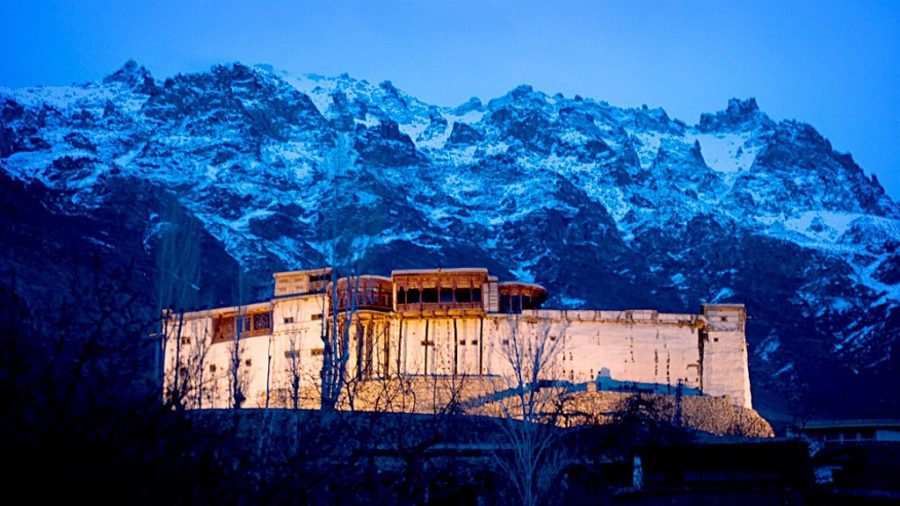
Altit Fort
Altit Fort stands as a testament to the rich history and enduring architectural beauty of Northern Pakistan. Dating back over nine centuries, this ancient fort is a living embodiment of Hunza’s cultural legacy.
Constructed in the 11th century, Altit Fort predates the more well-known Baltit Fort in the region. Originally built as a residence for the ruling family, it underwent numerous expansions and renovations over the centuries, reflecting a blend of Tibetan and Central Asian architectural influences.
Perched on a hill, Altit Fort boasts a commanding view of the surrounding valley and mountains. Its construction is a testament to the craftsmanship of the era, with thick stone walls, intricately carved wooden beams, and detailed motifs that showcase the aesthetic sophistication of ancient Hunza.
Beyond its architectural significance, Altit Fort is a repository of Hunza cultural and historical treasures. The fort includes a mosque, a royal chamber, dungeons, and communal spaces that offer a glimpse into the daily life and governance of Hunza past rulers.
The Aga Khan Cultural Service Pakistan undertook a comprehensive restoration project in the late 20th century to preserve Altit Fort. The restoration work aimed to maintain the fort’s original charm while incorporating modern conservation techniques.
Today, visitors to Altit Fort can explore its labyrinthine corridors, traverse ancient courtyards, and marvel at the panoramic views from its elevated position. The fort also houses a museum that showcases artifacts, traditional instruments, and historical exhibits, providing a comprehensive insight into the cultural evolution of the region.
Altit Fort, with its time-worn stones and echoes of centuries past, offers a captivating journey through Hunza’s history, inviting travelers to immerse themselves in the cultural richness of this mountainous wonderland.
Eagle Nest Hunza
Eagle Nest Hunza is a celestial perch that unveils a breathtaking panorama of nature’s grandeur. As one ascends the winding roads leading to this lofty vantage point along the Karakoram Highway, the anticipation builds for the visual feast awaiting at the top. At Eagle’s Nest, the air is crisp, and the landscape unfolds like a mesmerizing tapestry—snow-capped peaks, including the regal Rakaposhi, stand sentinel, while the Hunza River winds through the valley below. This location, renowned for its sunrise and sunset vistas, paints the sky in hues that seem to echo the very soul of the mountains.
Beyond its natural allure, Eagle’s Nest offers a haven for tranquility, complete with a comfortable lodge where visitors can savor local hospitality and cuisine. For those seeking not just a destination but an elevation of the spirit, Eagle’s Nest in Hunza is an invitation to witness the timeless beauty of Northern Pakistan from a truly majestic eyrie.
Kunjerab Pass Hunza
Khunjerab Pass Hunza stands as a testament to the breathtaking beauty of Northern Pakistan. Serving as the highest paved international border crossing, this majestic pass connects Hunza Valley with China, offering travelers an awe-inspiring journey through alpine landscapes. At an elevation of 4,693 meters (15,397 feet) above sea level, Khunjerab Pass is a lofty vantage point where the air is crisp, and the views stretch endlessly across snow-clad peaks and pristine meadows. The seasonal transformations add to its allure, with vibrant wildflowers in summer and a serene snow-covered landscape in winter.
Beyond its natural splendor, Khunjerab Pass serves as a cultural crossroads, where Pakistani and Chinese travelers meet against a backdrop of shared appreciation for the high-altitude realm. The stone monument marking the border symbolizes not just a political division but a harmonious link between nations. For those embarking on the iconic Karakoram Highway, Khunjerab Pass is a pinnacle experience, inviting travelers to witness the grandeur of the Karakorams and the seamless merging of nature and international connections in this alpine gateway of Hunza.
Skardu | Gateway to World 02nd Highest Peak
Skardu City emerges as the principal gateway to the captivating landscapes of Gilgit-Baltistan in Northern Pakistan. Poised on the banks of the shimmering Skardu River, the city exudes an aura of tranquility and serves as a bustling hub for explorers venturing into the mesmerizing valleys of the region. With the iconic Karakoram Highway threading through its heart, Skardu stands as a pivotal point for those seeking to unravel the treasures of the Northern Areas.
The city itself is a blend of tradition and modernity, adorned with ancient forts like Skardu Fort, where echoes of history resonate against the backdrop of rugged mountains. Skardu bazaars offer a colorful mosaic of local crafts and produce, inviting visitors to immerse themselves in the vibrant culture. From the serene Shangrila Resort to the azure beauty of Shangrila Lake, Skardu City is the launchpad for unforgettable journeys into the majestic landscapes that define the essence of Northern Pakistan.
Must Visit places in Skardu | Northern Areas of Pakistan
Shangrila Resort Skardu | Shangrila Lake Skardu
Shangrila Resort Skardu is a haven of tranquility and natural splendor. Situated on the banks of Lower Kachura Lake, this resort transports visitors into a realm of serene beauty that seems straight out of a dream. The centerpiece of Shangrila Resort is the Shangrila Lake, with its crystal-clear waters reflecting the surrounding peaks. The resort’s architecture blends seamlessly with the landscape, offering a harmonious retreat that includes lush gardens, quaint cottages, and panoramic views of the Karakorams.
Shangrila Resort is not just a place to stay; it’s an immersive experience, with activities ranging from boat rides on the lake to exploring the nearby Shangrila Waterfall. The resort’s unique ambiance, combined with warm hospitality and modern amenities, makes it a sought-after destination for those seeking a peaceful escape amid the breathtaking natural beauty of Skardu.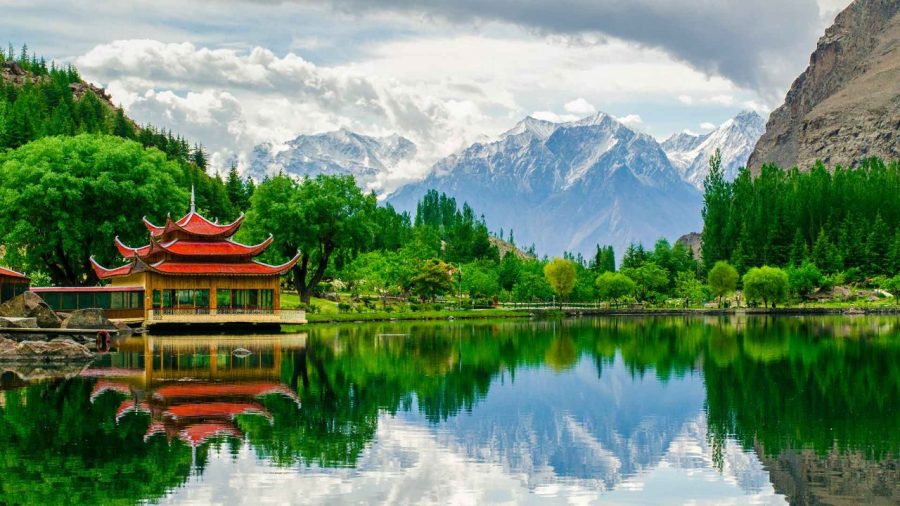
Upper Kachura Lake Skardu
Upper Kachura Lake emerges as a shimmering jewel, captivating visitors with its crystalline waters and the dramatic embrace of the surrounding Karakoram Range. Surrounded by pine-covered hills and rocky outcrops, the lake reflects the azure sky and snow-capped peaks, creating a breathtaking tableau of natural beauty. Unlike its more famous counterpart, Lower Kachura Lake, Upper Kachura is a serene and less-explored destination, offering an escape into the tranquility of nature.
Visitors are greeted with the soothing sound of gentle ripples and the symphony of birdsong, creating an atmosphere of peace and serenity. The lake is also known for its proximity to the iconic Shangrila Resort, adding an element of luxury to the wilderness. Whether one seeks a quiet retreat or an opportunity to capture the magic of Skardu through a camera lens, Upper Kachura Lake stands as an invitation to immerse oneself in the serene beauty of Northern Pakistan.
Skardu Fort | Kharpocho Fort Skardu
Perched atop a hillock overlooking the enchanting Skardu town in Pakistan, Kharpocho Fort emerges as a timeless sentinel, echoing the tales of Skardu’s rich history. Believed to have been built in the 16th century, this fortification has witnessed the ebb and flow of various rulers and the passage of centuries, becoming an integral part of Skardu’s cultural legacy.
Kharpocho Fort, strategically positioned, provides commanding views of the Skardu Valley, the confluence of the Shigar and Indus rivers, and the majestic Karakoram Range. Its elevated location not only served defensive purposes but also offered a vantage point for rulers to monitor the activities in the valley.
The fort’s architecture reflects a blend of Tibetan and Balti styles, showcasing the cultural influences that have shaped Skardu over the centuries. Its thick stone walls, watchtowers, and strategic layout are testaments to the fort’s resilience in the face of changing times.
Kharpocho Fort stands as a silent witness to Skardu’s cultural evolution. It has been used by different rulers, including the Dogras and the Sikhs, and its walls seem to echo the stories of the dynasties that have left their mark on this picturesque region.
In recent years, efforts have been made to preserve and restore Kharpocho Fort, ensuring that its historical and architectural significance endures. The restoration work aims to maintain the authenticity of the fort while creating a space for visitors to connect with Skardu past.
For modern-day visitors, Kharpocho Fort offers a journey back in time. Exploring its weathered corridors, climbing its ancient steps, and soaking in the panoramic views, one can feel a connection to the bygone eras that have shaped Skardu into the captivating destination it is today.
Kharpocho Fort, with its storied past and timeless silhouette against the Skardu sky, invites travelers to delve into the cultural tapestry of this Himalayan town, where history and natural beauty converge in a harmonious blend.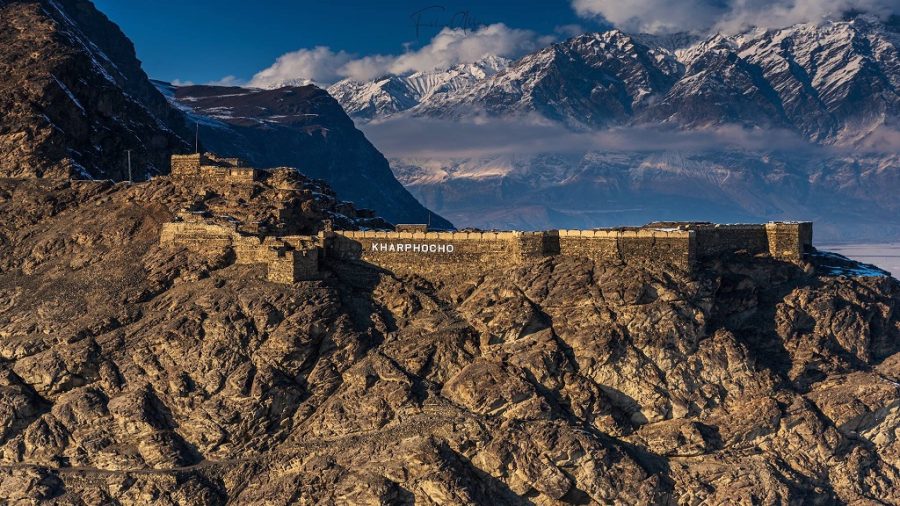
Deosai Plains
Deosai National Park stands as a testament to the pristine beauty of the Pakistani wilderness. Often referred to as the “Land of Giants,” this national park is a sanctuary for an array of unique flora and fauna, including the Himalayan brown bear and the rare Himalayan ibex. Stretching over 3,000 square kilometers, Deosai Plains is a vast expanse of alpine meadows, high-altitude lakes, and rolling hills that seem to touch the sky. The park’s centerpiece is the mesmerizing Sheosar Lake, reflecting the surrounding snow-capped peaks in its crystal-clear waters.
Deosai weather is as dynamic as its landscapes, showcasing a tapestry of seasons at high altitude. During summer, the meadows burst into a riot of wildflowers, creating a vibrant canvas against the azure sky. The weather is generally mild, with temperatures ranging from 3 to 12 degrees Celsius. As autumn sets in, the landscape transforms into a golden panorama, and temperatures start to dip, reaching sub-zero levels at night.
Deosai weather in winter is a spectacle of snow-covered expanses, with temperatures plummeting to as low as -20 degrees Celsius. The Deosai plains becomes a haven for snow enthusiasts, offering a unique opportunity for winter wildlife photography. Spring brings a gradual thaw, and the park reawakens with new life, marking the beginning of the seasonal cycle once again. Whether blanketed in snow or adorned with a carpet of blossoms, the weather in Deosai Plains adds a dynamic layer to the visitors experience, making it a year-round destination for those seeking to witness the untamed beauty of the Himalayan wilderness.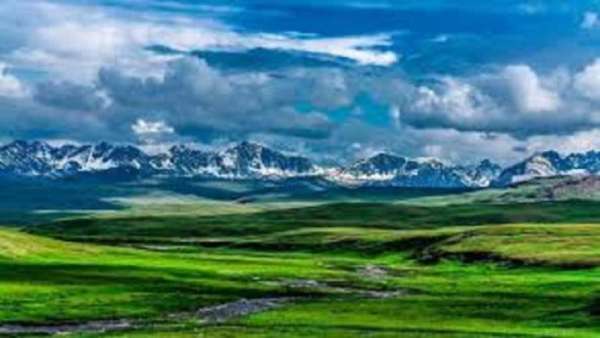
Swat Valley | The Switzerland of Pakistan
Swat Valley is a paradise that captivates all who venture into its lush embrace. Often referred to as the “Switzerland of Pakistan,” Swat is renowned for its pristine landscapes, cascading waterfalls, and the timeless beauty of its alpine meadows. The valley, crisscrossed by the Swat River, boasts a rich historical tapestry, with archaeological treasures dating back to the Gandhara civilization.
Mingling the old-world charm with the vibrancy of nature, Swat is adorned with terraced fields, orchards, and the scent of blooming flowers. Mingora, the largest city in Swat, serves as the gateway to this enchanting valley, leading to panoramic wonders like Malam Jabba, famous for its skiing resorts, and the tranquil Mahodand Lake. Swat Valley is not just a destination; it’s a sanctuary for those seeking serenity, adventure, and a timeless connection with the beauty of Pakistan’s northern landscapes.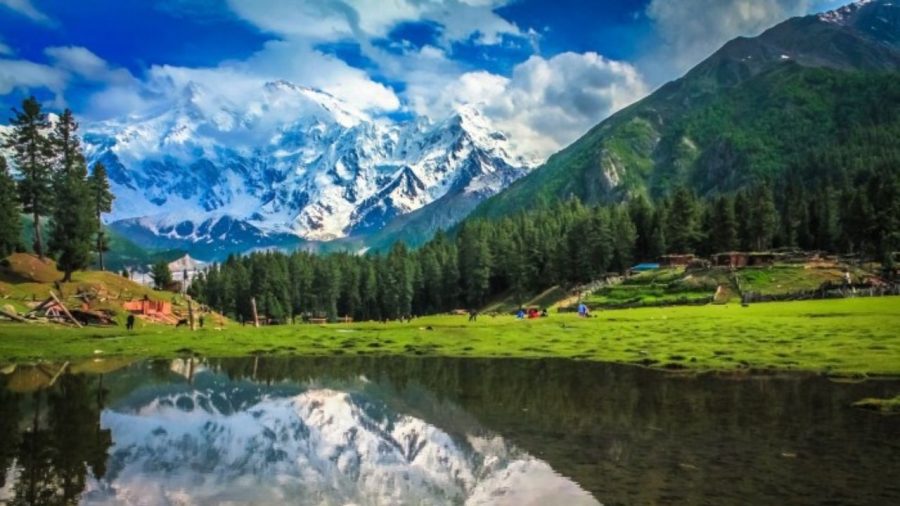
Places to visit in Swat | Northern Areas of Pakistan
Malam Jabba is a pristine haven for nature enthusiasts and adventure seekers alike. Renowned for its mesmerizing landscapes and year-round appeal, this hill station stands at an elevation of 2,804 meters (9,199 feet), offering a refreshing escape from the hustle and bustle of urban life.
Malam Jabba transforms into a winter wonderland, blanketed in a thick layer of snow during the colder months. It is home to the Malam Jabba Ski Resort, the only ski resort in Pakistan, where enthusiasts can carve through the powdery slopes while enjoying panoramic views of the surrounding mountains.
Beyond its natural beauty, Malam Jabba boasts historical significance, with the remains of an ancient Buddhist monastery nearby, reflecting the region’s diverse cultural heritage. The lush green meadows and the gentle murmur of the Swat River further enhance the serenity of this idyllic destination.
During the warmer months, Malam Jabba becomes a hub for adventure activities such as trekking, hiking, and zip-lining. The Malam Jabba Alpine Club offers a range of activities for those seeking an adrenaline rush against the backdrop of the stunning Swat Valley.
Malam Jabba provides a perfect blend of natural beauty and modern amenities. Visitors can find comfortable accommodation options, allowing them to unwind and savor the tranquility of the surroundings after a day of exploration and adventure.
Whether it’s the thrill of skiing down snow-covered slopes, the allure of summer adventures, or the desire for a peaceful retreat, Malam Jabba welcomes visitors with open arms. It stands as a testament to the diverse and enchanting landscapes that Pakistan’s northern regions have to offer, inviting all to experience the magic of Swat Valley.
Ushu Forest Swat
Nestled in the lap of the Swat Valley in Pakistan, the Ushu Forest stands as a testament to the enchanting beauty of Northern Pakistan. This sprawling woodland, draped in a lush green canopy, captivates visitors with its serene ambiance and rich biodiversity. Towering pine and cedar trees create a natural cathedral, where dappled sunlight plays on the forest floor, creating a picturesque setting for nature enthusiasts. The Ushu River, meandering through the heart of the forest, adds a melodic touch, further enhancing the soothing atmosphere.
As visitors traverse the well-laid trails, the forest unveils its treasures—vibrant wildflowers, diverse bird species, and the occasional glimpse of indigenous wildlife. Ushu Forest is not just a haven for those seeking tranquility amidst nature; it’s a sanctuary where the symphony of rustling leaves and flowing waters harmonizes to create an immersive experience, inviting all to savor the pristine beauty of this woodland retreat.
Butkara Stupa Swat
Butkara Stupa stands as a silent witness to the passage of centuries. Located near the contemporary city of Mingora in the Swat Valley, this ancient Buddhist stupa is a testament to the rich cultural and religious history that once flourished in this part of the Indian subcontinent.
Dating back to the 2nd century BCE, Butkara Stupa is an architectural marvel that reflects the artistic finesse of the Gandhara school. Although time and elements have weathered its physical form, the remnants of intricate carvings and relief work on the stupa’s structure provide glimpses into the craftsmanship of ancient Gandharan artisans.
Originally constructed during the reign of the Mauryan Empire, Butkara Stupa played a significant role in the Buddhist monastic tradition. The stupa, with its circular base and harmika (a square railing or projection), represents a key element in Buddhist religious architecture, serving as a symbol of the Buddha’s enlightenment.
Butkara Stupa gained international attention during archaeological excavations in the 20th century. Excavations revealed not only the structural intricacies of the stupa but also a wealth of artifacts, including sculptures and votive objects, providing valuable insights into the cultural and religious practices of ancient Gandhara.
Beyond its archaeological significance, Butkara Stupa is a cultural touchstone, representing the syncretism of diverse influences in the Gandhara region. The fusion of Hellenistic, Persian, and Indian artistic styles in its design speaks to the interconnectedness of ancient civilizations along the Silk Road.
Today, visitors to Butkara Stupa can explore the remnants of this ancient structure, marveling at the resilience of history amid the serene landscape of Swat Valley. The site invites contemplation on the ebb and flow of cultural and religious currents that have shaped the region over millennia.
Butkara Stupa, with its enigmatic presence, beckons modern-day travelers to connect with the spiritual and artistic legacy of Gandhara, offering a glimpse into the bygone era when this region was a flourishing hub of civilization and enlightenment.
Swat Museum
The Swat Museum stands as a cultural repository, safeguarding the region’s rich history and heritage. The museum, located in the town of Mingora, serves as a captivating journey through time, offering visitors a glimpse into the diverse civilizations that have thrived in this picturesque valley. Established in 1959, the Swat Museum houses a remarkable collection of artifacts, spanning from the Gandhara period to the Hindu Shahi era.
Intricately carved sculptures, delicate pottery, ancient coins, and artifacts excavated from archaeological sites dot the exhibits, narrating the story of Swat’s evolution from a hub of Buddhist civilization to a melting pot of diverse cultures. The museum’s surroundings, with the backdrop of Swat’s verdant hills, add to the overall ambiance, creating a space where the past comes alive, and the echoes of Swat Valley’s storied past resonate. For enthusiasts of history and archaeology, the Swat Museum provides a captivating window into the cultural mosaic of this enchanting region.
Chitral | Land of Rugged Beauty
Chitral, with its rugged terrain and distinct culture, is a captivating destination for those seeking adventure. Chitral is a hidden gem in the northwestern part of Pakistan, offering a captivating blend of natural beauty and cultural vibrancy. The region is renowned for its picturesque landscapes, with lush valleys, meandering rivers, and snow-capped peaks creating a breathtaking backdrop. The town of Chitral itself, set along the Chitral River, exudes a serene charm, with traditional wooden houses and a laid-back atmosphere.
Home to diverse ethnic groups, including the Kalash people known for their unique culture, Chitral is a melting pot of traditions, folklore, and warm hospitality. The iconic Chitral Fort, perched on a hill overlooking the town, stands as a testament to the region’s historical significance. With access to some of Pakistan’s most stunning trekking routes and a rich tapestry of cultural experiences, Chitral beckons travelers to explore its highland haven and immerse themselves in the unique allure of this lesser-explored gem.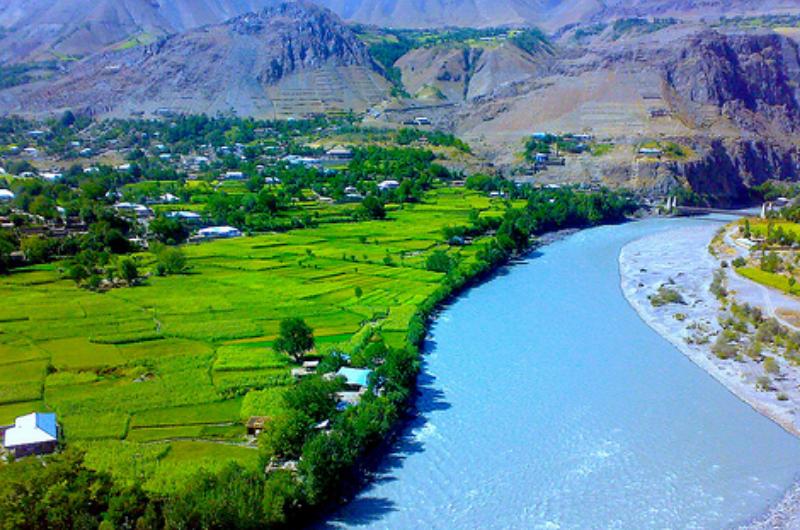
Best Places to Visit in Chiral | Northern Areas of Pakistan
Shandur Polo Ground
The highest polo ground in the world. Situated at an elevation of about 3,700 meters (12,000 feet) above sea level, Shandur Polo Ground stands as a testament to the passion and thrill of the “Sport of Kings” amidst the breathtaking landscapes of the Hindukush Range in Northern Pakistan. Often referred to as the “Roof of the World,” Shandur Polo Ground is not just a playing field; it is an expanse of natural beauty that adds a touch of grandeur to the ancient game of polo.
Shandur Polo Ground is renowned for being one of the highest polo grounds globally, providing a unique and challenging setting for the players. The thin mountain air and the surrounding peaks contribute to an atmosphere that is as intense as it is exhilarating.
Each year, the Shandur Polo Festival attracts teams from different regions, showcasing not only the sporting prowess of the players but also the rich cultural tapestry of the region. Against the backdrop of the Shandur Lake and the snow-capped mountains, the festival becomes a celebration of tradition, camaraderie, and the enduring spirit of the people.
Beyond its sporting significance, Shandur Polo Ground offers panoramic views that are nothing short of spectacular. The emerald Shandur Lake glistens in the foreground, and the distant peaks stand as silent spectators to the fast-paced action on the field.
Shandur has historical ties to the traditional lifestyle of the semi-nomadic people of the region. The polo matches at Shandur are not just games but echoes of a bygone era when this high-altitude plateau was a meeting point for different tribes and cultures.
For those fortunate enough to witness a polo match at Shandur, the experience transcends the sport itself. The cultural performances, the fervor of the spectators, and the sheer natural beauty combine to create memories that linger long after the last chukker has been played.
Shandur Polo Ground stands as a high-altitude coliseum where polo becomes more than a game; it transforms into a cultural extravaganza set against the backdrop of the awe-inspiring Hindukush.
Kalash Valley
Home to the unique Kalash people and their vibrant traditions. Nestled in the embrace of the mighty HinduKush Mountains, Kalash Valley stands as a living testament to the resilience of ancient cultures in the face of modernity. Tucked away in the Chitral District of Pakistan, this enchanting valley is home to the Kalash people, a unique community with a distinct language, vibrant traditions, and a history that echoes through the valleys and peaks. Surrounded by snow-capped mountains, the Kalash Valley is a visual symphony of lush greenery, terraced fields, and wooden houses adorned with intricate carvings.
The Kalash people, known for their colorful attire and lively festivals, continue to practice age-old customs that set them apart in the mosaic of Pakistan’s cultural diversity. As visitors traverse the winding paths that connect the Kalash villages, they are immersed in a world where time seems to slow down, and the echoes of ancient rituals resonate in the air. Kalash Valley, with its cultural richness and breathtaking landscapes, beckons those in search of a unique and authentic Himalayan experience.
Chitral Fort
Perched on the banks of the Chitral River amidst the stunning landscapes of the Chitral Valley, the Chitral Fort stands as a sentinel of the region’s rich history and cultural heritage. Originally built in the 17th century, the fort has undergone several renovations and expansions, bearing witness to the ebb and flow of time. Its strategic location, at the confluence of the Chitral and Kunar rivers, adds to its historical significance.
The architecture of Chitral Fort reflects a blend of traditional Khojki and Persian styles, showcasing intricate woodwork, ornate carvings, and imposing watchtowers. The fort has served various purposes throughout its existence, from a defense stronghold to a royal residence. Today, it stands not only as a historical monument but also houses the Chitral Museum, which displays a captivating collection of artifacts, weaponry, and cultural exhibits.
Visitors to Chitral Fort are not only treated to a glimpse of the region’s past but also offered panoramic views of the surrounding mountains and valleys. The fort’s enduring presence in the heart of Chitral not only preserves its architectural grandeur but also acts as a cultural beacon, inviting travelers to delve into the vibrant history of this enchanting region.
Shahi Masjid Chitral
A grand mosque with architectural significance. Nestled against the backdrop of the enchanting Chitral Valley, the Shahi Masjid stands as architectural gem and spiritual sanctuary. Dating back to the 1920s, this mosque is a testament to the rich cultural and historical tapestry of Chitral. Its name, “Shahi,” meaning royal, hints at the grandeur that unfolds as one steps into the courtyard. The mosque’s design seamlessly blends local craftsmanship with Central Asian influences, creating a structure that is both elegant and harmonious with its surroundings.
The Shahi Masjid boasts a distinctive wooden architecture, with intricately carved beams and columns that showcase the skilled craftsmanship of Chitrali artisans. The mosque’s prayer hall is adorned with vibrant geometric patterns, creating a visual feast for worshippers and visitors alike.
Beyond its religious significance, the Shahi Masjid serves as a cultural hub for the people of Chitral. The open courtyard, surrounded by the mosque’s wooden arcade, becomes a communal space for gatherings, discussions, and events, fostering a sense of community and connection.
The mosque, with its towering minarets and expansive courtyard, exudes a serene atmosphere that invites contemplation. Against the backdrop of the rugged mountains that define Chitral’s landscape, the Shahi Masjid becomes a spiritual oasis for those seeking solace and connection.
Efforts have been made to preserve the Shahi Masjid’s traditional architecture, ensuring that future generations can continue to appreciate and connect with Chitral’s cultural heritage. The mosque stands not just as a place of worship but as a living testament to the resilience and artistic flair of the Chitrali people.
For visitors to Chitral, the Shahi Masjid offers a glimpse into the region’s rich past and its commitment to preserving its cultural identity. The mosque’s tranquil ambiance and architectural splendor make it a must-visit destination for those exploring the cultural treasures of this picturesque valley.
Outdoor Adventures in the Northern Areas of Pakistan
The Northern Areas of Pakistan beckon adventure enthusiasts with a playground of rugged terrains, towering peaks, and untamed wilderness. From the dizzying heights of the Karakoram and Himalayan ranges to the tranquil valleys below, this region offers a myriad of outdoor adventures. Daredevils can challenge their mettle with treks to iconic peaks like Nanga Parbat, engage in rock climbing on sheer cliffs, or navigate the white-water rapids of the mighty Indus River. The enchanting landscapes also set the stage for paragliding, providing an exhilarating perspective of the sweeping valleys.
For those with a penchant for winter sports, the snow-covered slopes offer thrilling skiing and snowboarding opportunities. As the sun sets behind the majestic peaks, the Northern Areas transform into a stargazer’s paradise, inviting camping aficionados to spend nights under the vast, unpolluted sky. The Northern Areas are not just a destination; they are an adventure enthusiast’s dream, promising adrenaline-pumping experiences amidst some of the world’s most awe-inspiring natural wonders.
Trekking in the Himalayas and Karakoram in Northern Areas of Pakistan
Nanga Parbat Base Camp Trek
A challenging trek offering stunning views of the “Killer Mountain.”
Fairy Meadows: A starting point for treks to Nanga Parbat and beyond.
Embarking on the Nanga Parbat Base Camp Trek is not just a trekking endeavor; it’s a pilgrimage into the heart of the Himalayas, a venture that unveils the majesty of the world’s ninth-highest peak. As one begins the trek from Fairy Meadows, the landscape transforms into a symphony of alpine meadows, dense forests, and cascading streams, gradually giving way to the rugged grandeur of Nanga Parbat. The journey is not for the faint of heart, as the trail winds through challenging terrains and steep ascents, but each step is rewarded with unparalleled views of the “Killer Mountain.”
Camping beneath the immense gaze of Nanga Parbat at the base camp is an experience that transcends the ordinary. The air is thin, the temperatures drop, and the starlit sky seems within arm’s reach. As the first light of dawn kisses the snow-clad peaks, Nanga Parbat reveals its awe-inspiring stature, earning the nickname “The Naked Mountain.”
The Nanga Parbat Base Camp Trek is not just an adventure; it’s a communion with nature at its most sublime. The journey, marked by the sheer beauty of the surroundings and the raw power of the mountain, etches itself into the memory of every trekker, leaving an indelible mark of the grandeur of the Himalayas.
K2 Base Camp Trek
A bucket-list trek to the base camp of the world’s second-highest peak.
Concordia: The meeting point of multiple glaciers, surrounded by towering peaks.
Embarking on the K2 Base Camp Trek is not just a journey; it’s an odyssey through some of the planet’s most awe-inspiring landscapes. Nestled in the heart of the Karakoram Range, K2, the second-highest peak on Earth, serves as the backdrop for this adventure. The trek commences in Skardu, Pakistan, leading intrepid explorers through a rugged terrain of glaciers, deep valleys, and formidable mountain passes.
As trekkers ascend through the Baltoro Glacier and Concordia, a natural amphitheater surrounded by towering peaks, the grandeur of the Karakorams unfolds. The journey is punctuated by iconic landmarks like Broad Peak, Gasherbrum I and II, and the mesmerizing Trango Towers. The air thins as trekkers approach the K2 Base Camp, located at an altitude of around 5,150 meters (16,900 feet), offering an unparalleled vantage point of the formidable K2.
The K2 Base Camp Trek is not merely a physical feat; it’s a spiritual and mental challenge. Trekkers navigate crevasses, traverse high-altitude moraines, and camp beneath a sky ablaze with stars. The camaraderie among fellow trekkers and the hospitality of local communities add cultural dimensions to this Himalayan adventure.
The culmination at K2 Base Camp is a moment of triumph, standing in the shadows of one of the world’s most coveted peaks. The sheer scale of the surrounding mountains and the pristine beauty of the wilderness make the K2 Base Camp Trek an experience that transcends the ordinary—a pilgrimage for those seeking the sublime in nature’s grand theater.
Swat River Rafting
Swat River: An exciting river rafting destination with varying difficulty levels.
Swat River Rafting invites thrill-seekers to experience the exhilaration of navigating the tumultuous waters of the Swat River, set against the stunning backdrop of the Swat Valley in Pakistan. The river, with its crystal-clear waters sourced from the snow-capped Hindu Kush Mountains, offers an ideal playground for white-water enthusiasts. The journey down the Swat River involves conquering a series of rapids that range in intensity, providing both beginners and seasoned rafters with an adrenaline-pumping experience.
As rafters paddle through lush green valleys and towering cliffs, the river reveals its wild and untamed beauty, creating a perfect harmony of adventure and nature. Swat River Rafting is not merely a physical challenge but an immersion into the breathtaking landscapes of the Swat Valley, making it a must-try for those seeking an adrenaline rush amidst the serenity of Pakistan’s northern realms.
Skiing in Malam Jabba
Malam Jabba Ski Resort: The only ski resort in Pakistan, perfect for winter sports enthusiasts.
Malam Jabba emerges as a winter wonderland and a haven for skiing enthusiasts. Blessed with powdery snow and surrounded by the majestic peaks of the Hindu Kush range, this picturesque destination transforms into a skiing paradise during the winter months. The Malam Jabba Ski Resort, perched at an elevation of 2,804 meters (9,199 feet), beckons adventure seekers and winter sports aficionados from around the world.
The resort offers a range of skiing opportunities, from gentle slopes for beginners to challenging descents for the seasoned skier. The thrill of gliding down the pristine slopes, framed by the serene beauty of snow-covered landscapes, creates an unforgettable experience. With modern amenities, including ski lifts and equipment rentals, Malam Jabba ensures that both novices and seasoned skiers can revel in the joy of carving through the Himalayan snow, making it a premier destination for winter sports in Pakistan.
Paragliding at Sarfaranga Desert
The art of paragliding takes flight, offering adrenaline enthusiasts a unique opportunity to experience the beauty of Pakistan from a thrilling perspective. As the vibrant hues of the desert stretch beneath, paragliders launch into the open skies, riding the currents of air that dance above the dunes. The Sarfaranga Desert, located near Skardu in Pakistan, becomes a canvas for aerial exploration, with paragliders treated to panoramic views of the rugged terrain and the iconic peaks of the Karakoram Range.
The silence of the desert is broken only by the whoosh of wind against the paragliders’ canopies, creating a symphony of adventure and serenity. Paragliding at Sarfaranga not only satisfies the cravings of thrill-seekers but also provides a unique perspective on the vast and varied landscapes that define the beauty of Pakistan.
Culinary Delights in the Northern Areas of Pakistan
Local Cuisine Exploration
The local cuisine of the Northern Areas of Pakistan mirrors the diverse influences of Central Asian, Middle Eastern, and Kashmiri culinary traditions, creating a unique gastronomic identity. Delight your senses with the sizzling aroma of chapli kebabs, a local specialty made from minced meat infused with aromatic spices. Sample the warmth of traditional soups like Harisa during the chilly winters, providing sustenance and comfort. The ubiquitous Hunza walnut cake, a sweet confection laden with local walnuts, offers a delightful end to a meal.
Don’t miss the chance to savor indigenous dishes like Yakhni, a slow-cooked broth, and try the hearty mantu, dumplings filled with minced meat. As you explore the bustling bazaars and quaint eateries tucked away in these mountain towns, each dish becomes a narrative, telling the story of the land and its people. Engaging in local cuisine exploration in the Northern Areas is not just about indulging in delectable dishes but about partaking in a cultural ritual that bonds communities and visitors over the shared joy of good food amidst the breathtaking backdrop of the Karakoram Range.
Distinctive Flavors in Northern Areas of Pakistan
Chapshuro: A traditional meat-filled pastry.
Skardu Apricots: Delight in the sweetness of local apricots.
Tea Culture in Northern Areas of Pakistan
Noon Chai | Payu Cha: A pink-colored salted tea, a cultural staple.
Hunza Green Tea: Locally grown and enjoyed for its health benefits.
Traditional Markets and Street Food | Colorful Bazaars of Northern Areas of Pakistan
Chitral Bazaar: Explore the vibrant markets with local crafts and products.
Gilgit Main Market | NLI Market Gilgit: A bustling market offering a variety of goods.
Best Time to Visit the Northern Areas of Pakistan
Spring (February to April): Colorful Cherry Blossom
Summer (May to September): Ideal for trekking and outdoor adventures.
Autumn (October to November): Witness vibrant foliage and clear skies.
Winter (December to February): Perfect for snow sports and a winter wonderland experience.
Preserving the Northern Areas of Pakistan Natural Beauty
Local Initiatives: Community-led projects to protect the environment.
Responsible Tourism: Adopting eco-friendly practices for sustainable travel.
The Northern Areas of Pakistan beckon with their majestic peaks, cultural riches, and outdoor adventures. Whether you seek the thrill of trekking, the tranquility of nature, or the warmth of local hospitality, this region promises an unforgettable journey.
